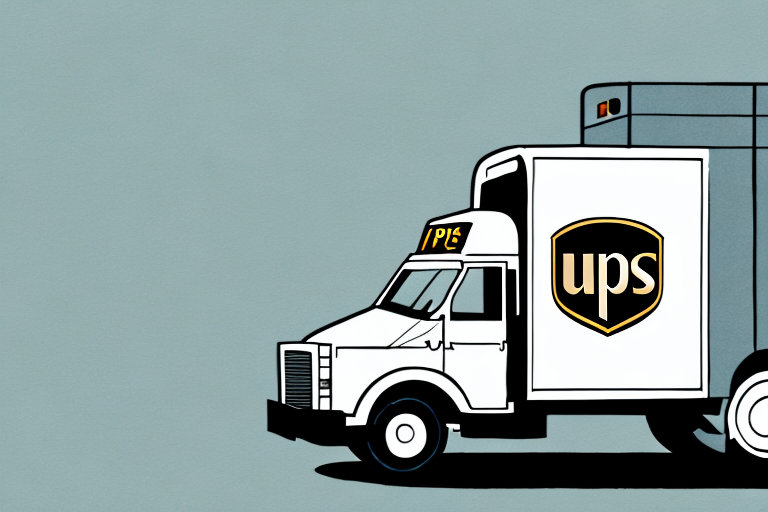Uncovering the Top 5 Benefits of Route Optimization in the Last Mile
Route optimization is a vital aspect of the last mile delivery process. With the rise of e-commerce, more businesses are investing in this technology to enhance their logistics operations. If you're still not convinced of the benefits of route optimization, this article is for you. We'll discuss the top five benefits of this technology in the last mile delivery process, supported by data and insights from reputable sources.
What is Route Optimization and Why is it Important in Last Mile Delivery?
Route optimization involves using software and algorithms to create the most efficient delivery routes for drivers. This technology helps businesses save time, reduce costs, and improve customer satisfaction. According to a 2023 ShipScience industry report, companies that implement route optimization can see a reduction in delivery times by up to 20%.
In the last mile delivery process, route optimization is crucial because it allows drivers to deliver packages faster and reach more customers in a shorter time frame. Additionally, it plays a significant role in reducing the environmental impact of delivery operations. By creating more efficient routes, businesses can decrease the number of miles driven and the amount of fuel consumed, thereby reducing carbon emissions and fostering sustainability.
Another key benefit of route optimization is improved resource management. Optimizing delivery routes ensures that drivers use their time and resources effectively, which enhances overall productivity and profitability. Businesses can allocate their fleet more efficiently, reducing the need for additional vehicles and drivers.
How Route Optimization Helps to Reduce Delivery Costs
One of the most significant benefits of route optimization is cost reduction. By creating the most efficient routes, businesses can reduce the number of miles traveled by drivers, thereby lowering fuel costs. According to a study by the U.S. Department of Transportation, optimized routing can decrease fuel consumption by up to 15%.
Additionally, route optimization minimizes the need for additional vehicles and drivers, further reducing overhead costs. This efficiency not only lowers operational expenses but also contributes to a company's bottom line by enhancing overall profitability.
Moreover, route optimization can help businesses reduce their carbon footprint. By minimizing the distance traveled and the number of vehicles on the road, companies can significantly lower their greenhouse gas emissions. This environmental benefit not only appeals to eco-conscious consumers but also strengthens the company’s reputation as a socially responsible organization.
The Role of Route Optimization in Enhancing Delivery Efficiency
Efficiency is paramount in the last mile delivery process. Route optimization enables drivers to make more deliveries in less time, significantly increasing delivery efficiency. Research by ShipScience indicates that optimized routes can boost delivery capacity by up to 25%, allowing businesses to serve more customers without expanding their fleet.
This technology ensures that drivers take the most direct and efficient routes, reducing time spent on the road and increasing the time available for actual deliveries. Consequently, businesses can handle higher delivery volumes, leading to increased revenue and customer reach.
In addition to improving delivery efficiency, route optimization positively impacts the environment. By reducing the distance traveled and the time spent on the road, it helps lower carbon emissions and minimize the overall carbon footprint of the delivery process. This sustainability aspect is increasingly important as both businesses and consumers prioritize environmental responsibility.
The Impact of Route Optimization on Customer Satisfaction and Retention
Customer satisfaction is paramount in the last mile delivery process. Route optimization can help businesses enhance their delivery services, making customers happier and more likely to return. Faster and more efficient deliveries meet customer expectations for quick service, which is critical in today’s competitive market.
For instance, providing up-to-date delivery times through route optimization software improves communication with customers, enhancing their overall experience. According to a customer insights report, businesses that use route optimization see a 30% increase in customer satisfaction scores.
Additionally, route optimization can help businesses save money by reducing fuel costs and vehicle maintenance expenses. Efficient routes decrease the distance traveled by delivery vehicles, which lowers fuel consumption and minimizes wear and tear on vehicles. This cost saving can be passed on to customers through more competitive pricing or reinvested into further improving delivery services.
The Advantages of Real-Time Route Optimization in Last Mile Delivery
Real-time route optimization provides drivers with the most up-to-date information on the best routes to take. This technology considers real-world factors such as traffic conditions, road closures, and weather events, creating the most efficient routes on the fly. As reported by ShipScience, real-time adjustments can improve delivery times by an additional 10% compared to static route planning.
With real-time route optimization, drivers can quickly adapt to changes in the delivery process, ensuring timely and efficient deliveries. This adaptability is crucial for maintaining service reliability, especially in urban areas with fluctuating traffic patterns.
In addition to improving delivery efficiency, real-time route optimization reduces fuel consumption and carbon emissions. By taking the most direct and efficient routes, drivers spend less time on the road and cover shorter distances, resulting in lower fuel usage and reduced environmental impact. This makes real-time route optimization a sustainable choice for modern delivery operations.
Best Practices for Implementing Route Optimization in Your Delivery Operations
Implementing route optimization in your delivery operations can be challenging, especially if you're new to the technology. However, with best practices, businesses can successfully integrate route optimization and see significant improvements in their logistics operations.
- Ensure Accurate Data Input: Accurate address data, delivery windows, and vehicle capacities are essential for effective route optimization.
- Use Predictive Analytics: Leveraging historical data and predictive analytics can enhance route planning and forecasting.
- Regularly Analyze and Adjust Routes: Continually monitor and adjust routes to maintain maximum efficiency as conditions change.
Another important best practice is to consider the unique needs and constraints of your business, such as delivery windows, traffic patterns, and vehicle capacity. Tailoring routes to these specific factors ensures that the optimization is effective and practical.
Communication with drivers and stakeholders is also crucial. Providing training on the new technology and processes, as well as soliciting feedback, helps ensure smooth implementation and buy-in from the team. Engaging your team in the process fosters a collaborative environment conducive to success.
How to Choose the Right Route Optimization Software for Your Business
Selecting the right route optimization software is critical for businesses aiming to improve their logistics operations. When choosing software, consider factors such as cost, features, and ease of use. It's also important to select software that integrates seamlessly with your existing systems to ensure maximum compatibility and efficiency.
Consider the level of customer support provided by the software provider. Reliable and responsive support is essential, as technical issues can significantly impact your operations. Look for providers that offer multiple support channels, such as phone, email, and live chat, and ensure that their support team is knowledgeable and experienced in addressing your specific needs.
Additionally, evaluate the software's scalability to ensure it can grow with your business. A scalable solution can accommodate increasing delivery volumes and expanding service areas without compromising performance.
Case Studies: Examples of Companies that Have Successfully Implemented Route Optimization in Last Mile Delivery
Several companies have successfully implemented route optimization in their last mile delivery operations, demonstrating significant improvements in efficiency and customer satisfaction.
- Amazon: Amazon uses advanced route optimization algorithms to manage the delivery of millions of packages each day. This system helps minimize delivery times and costs while maximizing customer satisfaction.
- UPS: UPS employs route optimization technology to reduce fuel consumption, minimize delivery times, and enhance overall operational efficiency. Their use of the ORION system has reportedly saved the company millions of dollars annually.
- FedEx: FedEx utilizes route optimization to streamline its delivery processes, ensuring timely deliveries and reducing operational costs.
- DHL: DHL has implemented a real-time route optimization system that uses data on traffic, weather, and road conditions to optimize delivery routes. This has led to a significant reduction in delivery times and fuel consumption, supporting their sustainability goals.
Tips for Overcoming Common Challenges When Implementing Route Optimization
Implementing route optimization can present several challenges, especially in larger businesses with complex logistics operations. Common obstacles include data accuracy, driver resistance, and the investment required for the necessary technology. However, with proper planning, training, and communication, businesses can overcome these challenges.
- Enhance Data Accuracy: Ensure that all input data is accurate and up-to-date to maximize the effectiveness of route optimization.
- Engage and Train Drivers: Provide comprehensive training and involve drivers in the implementation process to reduce resistance and encourage adoption.
- Invest in the Right Technology: Allocate sufficient resources to acquire and maintain the appropriate route optimization software and hardware.
Additionally, one common challenge is customer resistance to changes in delivery schedules. To address this, businesses can communicate the benefits of route optimization to customers, offering alternative delivery options and ensuring transparency throughout the process. By involving customers and addressing their concerns, businesses can implement route optimization without compromising customer satisfaction.
In conclusion, route optimization is a crucial tool for businesses looking to improve their last mile delivery process. With benefits such as cost reduction, increased efficiency, and enhanced customer satisfaction, the advantages of this technology are clear. By following best practices, selecting the right software, and overcoming common challenges, businesses can successfully implement route optimization and achieve significant improvements in their logistics operations.




















